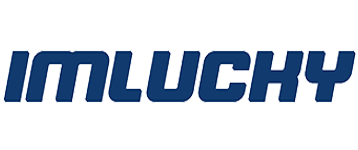การทำความเข้าใจการใช้งานเคลือบอีเล็กโทรโฟเรซิสและความต้องการในอุตสาหกรรม
บทบาทที่เพิ่มขึ้นของเคลือบอีเล็กโทรโฟเรซิสในอุตสาหกรรมการผลิตรถยนต์
การเคลือบด้วยไฟฟ้า (E-coating) ได้กลายเป็นสิ่งจำเป็นอย่างมากในอุตสาหกรรมการผลิตรถยนต์ เนื่องจากให้การป้องกันสนิมที่ครอบคลุมและสม่ำเสมอแม้ในชิ้นส่วนที่มีรูปทรงซับซ้อน โดยจากการวิจัยในปี 2020 พบว่ารถยนต์ส่วนใหญ่ในตลาด ประมาณ 85% นั้นมีการใช้สารเคลือบด้วยไฟฟ้า (electrodeposition coatings) บนพื้นท้องรถ และตลาดของ e-coat นั้งคาดว่าจะเติบโตขึ้นเฉลี่ยปีละประมาณ 5% จนถึงปี 2025 ทำไมถึงเป็นเช่นนั้น? เนื่องจากรถยนต์ไฟฟ้า (EVs) คือปัจจัยหลักที่ผลักดันเทรนด์นี้ ชิ้นส่วนอลูมิเนียมที่มีน้ำหนักเบาซึ่งใช้ในรถยนต์ไฟฟ้า เช่น ถาดแบตเตอรี่ (battery trays) และตัวเครื่องมอเตอร์ (motor housings) จำเป็นต้องใช้ชั้นเคลือบที่มีความทนทานสูงโดยปราศจากข้อบกพร่องใด ๆ เลย แม้แต่รอยรั่วเล็กน้อยในชั้นเคลือบก็อาจเป็นอันตรายและทำให้อายุการใช้งานของรถยนต์ลดลง ระบบ e-coating ในปัจจุบันใช้การปรับแรงดันแบบเรียลไทม์เพื่อควบคุมความหนาของฟิล์มเคลือบให้อยู่ที่ประมาณ 18 ถึง 22 ไมครอน บนจุดต่าง ๆ ที่มีความซับซ้อน เช่น รอยเชื่อมต่อ (welded joints) และตัวยึดโลหะที่ผ่านการตัดขึ้นรูป (stamped metal brackets) ซึ่งเป็นสิ่งที่ผู้ผลิตต้องเผชิญอยู่ทุกวัน
วิธีที่ E-Coating สนับสนุนการผลิตจำนวนมากและการรักษาคุณภาพให้สม่ำเสมอ
โรงงานผลิตรถยนต์ใช้เทคโนโลยีการเคลือบอิเล็กโทรโฟรีซิส (e-coating) ซึ่งมีข้อจำกัดตามธรรมชาติในแง่ของปริมาณวัสดุที่สามารถเคลือบได้ ส่งผลให้ความหนาเคลือบมีความแปรปรวนอยู่ที่ประมาณ ±2 ไมครอน เมื่อทำการเคลือบชิ้นส่วนมากกว่า 50,000 ชิ้นต่อวัน เทคนิคการพ่นด้วยมือไม่สามารถให้ความสม่ำเสมอได้เท่ากับวิธีนี้ กระบวนการทางไฟฟ้าเคมีนี้ให้ผลลัพธ์ที่ดีเท่ากันทั้งกับชิ้นส่วนบานพับที่มีรูปทรงซับซ้อนและพื้นผิวเรียบธรรมดา ซึ่งหมายความว่ารถยนต์จะกลับมาพร้อมปัญหาสนิมก่อนที่การรับประกันจะหมดอายุน้อยลง ผู้ผลิตรถยนต์รายใหญ่หลายรายพบว่าอัตราข้อบกพร่องในการเคลือบลดลงประมาณ 40 เปอร์เซ็นต์ ตั้งแต่เปลี่ยนมาใช้ระบบอัตโนมัติเหล่านี้ อ่างเคลือบสีของพวกเขายังคงความเสถียรได้นานประมาณ 8 ถึง 12 สัปดาห์ ด้วยวิธีการกรองที่ดีขึ้น แม้ว่ากำหนดการบำรุงรักษาจะแตกต่างกันไปตามความต้องการในการผลิต
แนวโน้ม: ความเป็นอัตโนมัติและการเปลี่ยนแปลงที่เกิดจาก EV ในการออกแบบสายการเคลือบ
การพัฒนาล่าสุดในอุตสาหกรรมการผลิตยานยนต์ไฟฟ้า โดยเฉพาะเทคโนโลยีการหล่อขนาดใหญ่ (gigacasting) ต้องการอุปกรณ์เคลือบผิวที่ออกแบบมาเฉพาะทาง ซึ่งสามารถจัดการกับชิ้นส่วนอลูมิเนียมขนาดใหญ่ที่มีความยาว 2 เมตรได้ โรงงานสมัยใหม่หลายแห่งกำลังติดตั้งระบบแขนกลยกรถยนต์คู่ขนานไปกับหัวพ่นสีอัจฉริยะที่ควบคุมด้วยระบบวิชันคอมพิวเตอร์ ระบบที่ว่านี้ช่วยป้องกันปัญหาการสะสมของสีในบริเวณร่องลึกที่เข้าถึงได้ยากของชิ้นงานหล่อ ในเวลาเดียวกัน ผู้ผลิตจำนวนมากก็เริ่มนำระบบเบรกคืนพลังงานกลับมาใช้กับสายพานลำเลียง ซึ่งสามารถลดการใช้พลังงานลงได้ประมาณ 15 เปอร์เซ็นต์ ตามที่มีการเผยแพร่ในงานวิจัยของสถาบัน IEEE เมื่อปีที่แล้ว การออกแบบระบบแบบโมดูลาร์ช่วยให้โรงงานสามารถปรับเปลี่ยนกำลังการผลิตได้ง่ายระหว่างประมาณ 30 ถึง 60 หน่วยต่อชั่วโมง โดยไม่ต้องรื้อถอนส่วนต่าง ๆ ของอาคารโรงงานทั้งหมด ความยืดหยุ่นเช่นนี้ทำให้ทีมผลิตตอบสนองได้อย่างรวดเร็วเมื่อมีการเปลี่ยนแปลงความต้องการของตลาดอย่างไม่คาดคิด
การจัดระดับความจุของสายการเคลือบให้สอดคล้องกับปริมาณการผลิต
การศึกษาของ AutoTech ปี 2023 พบว่า สายการเคลือบที่มีขนาดใหญ่เกินความจำเป็นจะเพิ่มต้นทุนการดำเนินงานถึง 22% เนื่องจากการหมุนเวียนสารละลายโดยไม่จำเป็น การออกแบบขนาดอย่างชาญฉลาดจะช่วยให้ความจุของถังสอดคล้องกับปริมาณการผลิต:
- ปริมาณต่ำ (200 ชิ้น/ชั่วโมง): ถังสารละลายขนาด 50,000 ลิตร พร้อมระบบจัดวางแบบแมนนวล
-
ปริมาณสูง (800 ชิ้น/ชั่วโมงขึ้นไป): ถังสารละลายขนาด 120,000 ลิตร พร้อมระบบจัดเรียงพาเลตแบบหุ่นยนต์
สถานประกอบการที่ใช้การวิเคราะห์เชิงพยากรณ์สำหรับการเติมสารละลายสามารถบรรลุอัตราผลผลิตผ่านการตรวจสอบครั้งแรกได้ถึง 94% ซึ่งสูงกว่าระบบแบบคงที่ที่ 78%
การประเมินความต้านทานการกัดกร่อนและการทำงานของชั้นเคลือบ
ชิ้นส่วนยานยนต์ต้องเผชิญกับความชื้น เกลือถนน และอุณหภูมิที่เปลี่ยนแปลงอย่างต่อเนื่อง ทำให้ความต้านทานการกัดกร่อนมีความสำคัญอย่างยิ่ง การเคลือบแบบคาโทดิกอิเล็กโทร (Cathodic electrocoating) จะสร้างชั้นฟิล์มที่สม่ำเสมอและเป็นฉนวน ซึ่งช่วยยับยั้งการเกิดออกซิเดชันของโลหะ ทำให้อายุการใช้งานของชิ้นส่วนยาวนานขึ้นถึงสามเท่าเมื่อเทียบกับโลหะที่ไม่ได้เคลือบ ตามผลการศึกษาปี 2023 เกี่ยวกับการป้องกันการกัดกร่อน
การทดสอบพ่นเกลือแสดงให้เห็นว่าชิ้นส่วนที่เคลือบด้วยอีเล็กโทรดีโพสิต (e-coated) สามารถทนต่อสนิมแดงได้นาน 1,200–1,500 ชั่วโมง ซึ่งทนได้นานกว่าชิ้นส่วนที่เคลือบด้วยผง (powder-coated) ถึง 2.5 เท่า เป็นไปตามข้อกำหนดของผู้ผลิตอุปกรณ์ต้นทาง (OEM) ที่กำหนดไว้ที่ 1,000 ชั่วโมงสำหรับชิ้นส่วนใต้ท้องรถและช่วงล่าง ในสภาพแวดล้อมที่มีความชื้นสูงหรือใกล้ชายฝั่ง ผู้ผลิตนิยมใช้สารเคมีประเภทอีพ็อกซี่เป็นฐาน (epoxy-based chemistries) เนื่องจากยึดเกาะได้ดีเยี่ยม ในขณะที่เรซินอะคริลิก (acrylic resins) มักถูกเลือกใช้สำหรับชิ้นส่วนภายในที่ต้องการความคงทนต่อรังสีอัลตราไวโอเลต (UV stability)
นวัตกรรมเช่น สารเติมแต่งเซรามิกส์แบบนาโน (nano-ceramic additives) ช่วยเพิ่มประสิทธิภาพในการกันสนิม ทำให้สามารถปกป้องโลหะผสมน้ำหนักเบาและถาดแบตเตอรี่รถยนต์ไฟฟ้า (EV battery trays) ได้อย่างเชื่อถือได้ โดยเฉพาะในระยะยาว 10–15 ปี ซึ่งการเกิดสนิมเล็กน้อยอาจส่งผลต่อความสมบูรณ์ของโครงสร้าง
การเลือกใช้ระบบอีเล็กโทรดีโพสิตแบบคาโทดิกอีพ็อกซี่ (Cathodic Epoxy) และอะคริลิก (Acrylic E-Coating)
ความแตกต่างด้านประสิทธิภาพในระบบต่างๆ ของรถยนต์
สารเคลือบอีพอกซีและอะคริลิกแบบคาโทดิกมีบทบาทที่แตกต่างกัน อีพอกซีระบบคาโทดิกมักใช้ในส่วนต่างๆ ของตัวถัง เช่น แขนช่วงล่างและคาลิปเปอร์เบรก เนื่องจากให้การทนต่อการกัดกร่อนจากละอองเกลือมากกว่า 1,200 ชั่วโมง (ASTM B117) ส่วนอะคริลิกมีความเสถียรต่อรังสีอัลตราไวโอเลต (UV) และรักษาสีได้ดี จึงเป็นที่นิยมใช้ในชิ้นส่วนที่ถูกแสงอาทิตย์ เช่น แผงตกแต่งภายในและฝาครอบล้อ
โครงสร้างโมเลกุลและการยึดติด: อีพอกซีเทียบกับเรซินอะคริลิก
เรซินอีพอกซีสร้างโครงข่ายเชื่อมโยงกันแน่นหนา ซึ่งยึดเกาะกับโลหะได้ดีเยี่ยม มีแรงยึดเหนียวถึง 15 MPa (ISO 4624) เหมาะสำหรับบริเวณที่รับแรงกระทำสูง ในขณะที่อะคริลิกมีโครงสร้างสายโซ่โมเลกุลแบบเส้นตรง ให้ความยืดหยุ่นในช่วงเปลี่ยนอุณหภูมิ (-30°C ถึง 120°C) แม้จะมีความทนทานต่อสารเคมีต่ำกว่าอีพอกซี
กรณีศึกษา: อีพอกซีสำหรับใต้ท้องรถเทียบกับอะคริลิกสำหรับแผงตกแต่งภายใน
การวิเคราะห์ปี 2023 ของสายการผลิตสารเคลือบ 3 สายแสดงให้เห็นว่า:
| Subsystem | ประเภทการเคลือบ | การปรับปรุงอายุการใช้งาน | Cost per Part ($) |
|---|---|---|---|
| การยกเลิก | Cathodic Epoxy | 42% นานกว่าการชุบสังกะสี | 1.85 |
| Dashboard Brackets | อะคริลิก | ต้านทานรังสี UV ได้ดีขึ้น 28% | 1.40 |
สูตรผสมใหม่เพื่อการป้องกันหลายฟังก์ชัน
สารเคลือบแบบไฮบริดอีพ็อกซี่-อะคริลิกในปัจจุบันมีความต้านทานการกัดกร่อนได้ 900 ชั่วโมง และการเสื่อมสภาพของความเงาลดลง 85% (SAE J2527) สารผสมเหล่านี้สามารถตอบสนองความต้องการของถาดแบตเตอรี่รถยนต์ไฟฟ้า (EV) ได้โดยการรวมคุณสมบัติการต้านทานสารเคมีของอีพ็อกซี่เข้ากับความเสถียรทางความร้อนของอะคริลิกในช่วงที่ถูกความร้อนสูงชั่วคราวจนถึง 180°C
การเลือกชนิดเรซินให้เหมาะสมกับหน้าที่ของชิ้นส่วนและสภาพแวดล้อมที่ใช้งาน
เลือกเรซินอีพ็อกซี่สำหรับ:
- สภาพแวดล้อมที่มีความเค็มสูง (บริเวณที่โดนน้ำฝนหรือละอองน้ำจากถนน)
- ชิ้นส่วนที่ต้องการความหนาของฟิล์ม ¥50 ¼m
- ชิ้นส่วนที่มีรอยเชื่อมหรือรอยต่อ
เลือกใช้อะคริลิกเมื่อ:
- ผิวหน้าแบบ A-class มีความสำคัญต่อความสวยงาม
- การเปลี่ยนแปลงอุณหภูมิรายวันเกิน 80°C
- การบ่มตัวเร็ว (<15 นาทีที่อุณหภูมิ 160°C) ส่งผลต่อประสิทธิภาพการผลิต
การให้แน่ใจว่าการเคลือบมีความสม่ำเสมอในชิ้นส่วนรถยนต์ที่มีรูปทรงซับซ้อน
ความท้าทายในการเคลือบชิ้นส่วนที่มีความละเอียดอ่อนและชิ้นส่วนที่ประกอบแล้ว
การออกแบบผลิตภัณฑ์ในปัจจุบันมักมีการใช้โครงสร้างแบบกลวง ประกอบชิ้นส่วนเป็นชั้นๆ และมีค่าความแม่นยำในการผลิตสูงมาก บางครั้งมีความละเอียดอ่อนกว่าครึ่งมิลลิเมตร เมื่อพิจารณาตัวเลขการผลิตจริงจากทั่วทั้งอุตสาหกรรม จะพบว่าระบบเคลือบส่วนใหญ่สามารถทำงานได้ประมาณ 95% เมื่อใช้กับพื้นที่เรียบและแบน แต่ปัญหาจะเกิดขึ้นเมื่อเจอกับรูปทรงเรขาคณิตที่ซับซ้อน เช่น โครงแบบกล่อง หรือบริเวณที่ชิ้นส่วนทับซ้อนกัน ซึ่งอัตราความสำเร็จจะลดลงเหลือเพียงประมาณสองในสามในจุดที่ท้าทายเหล่านี้ ชิ้นส่วนบานพับที่เชื่อมด้วยการเชื่อมถือเป็นกรณีที่พบปัญหาได้ง่ายเป็นพิเศษ เมื่อโลหะเย็นตัวหลังการเชื่อม มักเกิดจุดเครียดภายในที่ทำให้เกิดช่องว่างเล็กๆ ระหว่างพื้นผิว ช่องว่างในระดับจุลภาคเหล่านี้จะกลายเป็นช่องอากาศในกระบวนการเคลือบด้วยไฟฟ้า ซึ่งก่อให้เกิดตำหนิบนพื้นผิวเคลือบที่สร้างความหงุดหงิดอย่างที่ทุกคนคุ้นเคยกันดี
การเคลือบด้วยไฟฟ้าและการเจาะทะลุเข้าสู่พื้นที่ฟาราเดย์แคจ (Faraday Cage Penetration) อธิบายไว้
ผลของกรงฟาราเดย์จำกัดการซึมผ่านของเคลือบในพื้นที่ปิด เช่น จุดยึดเครื่องยนต์ หรือส่วนเสริมเสา A การใช้แรงดันไฟฟ้า 200–350 โวลต์ จะช่วยเพิ่มการเคลื่อนที่ของไอออนให้เข้าสู่พื้นที่ที่อยู่ลึก ตัวอย่างเช่น การเพิ่มการนำไฟฟ้าของสารละลายจาก 1,200 ไมโครซีเมนต์ต่อเซนติเมตร เป็น 1,800 ไมโครซีเมนต์ต่อเซนติเมตร จะช่วยเพิ่มประสิทธิภาพการเคลือบในช่องว่างได้ถึง 22% โดยไม่สูญเสียความหนาที่ขอบ
การบรรลุความหนาของฟิล์มที่สม่ำเสมอในชิ้นส่วนระบบกันสะเทือน
| พารามิเตอร์ | ช่วงควบคุมสำหรับชิ้นส่วนระบบกันสะเทือน | แผ่นตัวถัง |
|---|---|---|
| ความหนาของฟิล์ม | 25–32 ไมโครเมตร | 18–22 ไมโครเมตร |
| เวลาหยุด | 90–120 วินาที | 4560 วินาที |
| การล้างหลังการชุบไหลผ่าน | 8–12 ลิตรต่อนาที | 4–6 ลิตรต่อนาที |
ชิ้นส่วนระบบกันสะเทือนต้องการความคลาดเคลื่อนความหนา ±2 ไมโครเมตร เพื่อทนต่อเศษวัสดุบนถนน ระบบปรับแรงดันแบบปรับตัวได้ และหัวพ่นสีแบบหุ่นยนต์ 6 แกน ช่วยให้การเคลือบมีความสม่ำเสมอแม้บนรูปทรงที่ไม่สม่ำเสมอ เช่น แขนควบคุม
การปรับปรุงแรงดันไฟฟ้าและสภาพการนำไฟฟ้าของสารละลายสำหรับชิ้นงานรูปทรง 3 มิติ
อุณหภูมิของสารละลาย (28–32°C) และปริมาณเรซินในสารละลาย (18–22%) มีผลอย่างมากต่อการไหลของสารละลายในโครงสร้างรูปทรง 3 มิติ จากการศึกษาในรายงานการตกแต่งยานยนต์ปี 2024 พบว่า การเพิ่มแรงดันสูงสุดจาก 250V เป็น 275V ช่วยลดจุดที่เคลือบบางลงได้ถึง 40% ในชิ้นงานเช่น ตัวกล่องเกียร์ โดยยังคงค่าใช้จ่ายด้านพลังงานไว้ต่ำกว่า 0.18 ดอลลาร์สหรัฐ/กิโลวัตต์-ชั่วโมง
การผสานระบบเตรียมพื้นผิว ระบบล้าง และประสิทธิภาพกระบวนการ
บทบาทสำคัญของการเตรียมพื้นผิวเพื่อเพิ่มการยึดติด
การเตรียมพื้นผิวที่มีประสิทธิภาพช่วยกำจัดน้ำมันและออกไซด์ที่ทำให้การยึดติดของเคลือบลดลง ตามรายงานการศึกษาวัสดุปี 2024 ระบบที่ใช้เทคโนโลยีผสมในการเตรียมพื้นผิวสามารถเพิ่มความแข็งแรงในการยึดติดได้มากกว่าวิธีการดั้งเดิมถึง 40% ซึ่งทำให้กระบวนการทำความสะอาดหลายขั้นตอนเป็นสิ่งจำเป็นต่อประสิทธิภาพการเคลือบที่สม่ำเสมอ
การเปรียบเทียบระหว่างการฟอสเฟตและการใช้สารเตรียมพื้นผิวแบบนาโนเซรามิกเพื่อความทนทาน
แม้ว่าการฟอสเฟตจะยังคงถูกใช้อย่างแพร่หลาย แต่ทางเลือกอย่างเซรามิกนาโนให้ความสามารถในการต้านทานการกัดกร่อนมากกว่า 3–5 เท่า ซึ่งสามารถทนได้เกินกว่า 2,000 ชั่วโมงในการทดสอบตามมาตรฐาน ASTM B117 อีกทั้งยังทำงานที่อุณหภูมิต่ำกว่า (30–40°C เมื่อเทียบกับ 50–70°C สำหรับสังกะสีฟอสเฟต) ช่วยลดการใช้พลังงานและเพิ่มประสิทธิภาพด้านความยั่งยืน
สังกะสีฟอสเฟต เทียบกับ ซิร์โคเนียม: ประสิทธิภาพและความ impact ต่อสิ่งแวดล้อม
| เมตริก | สังกะสีฟอสเฟต | ซิร์โคเนียม |
|---|---|---|
| เวลากระบวนการ | 90 วินาที | 60 วินาที |
| ของเสียตะกอน | 15 กก./วัน | 0 กก./วัน |
| การปล่อยสารอินทรีย์ (COD) | 120 มก./ลิตร | 25 มก./ลิตร |
การเตรียมพื้นผิวด้วยเซอร์โคเนียมช่วยกำจัดตะกอนโลหะหนักและลดต้นทุนการบำบัดน้ำเสียลง 65% ซึ่งสอดคล้องกับเป้าหมายด้านความยั่งยืนของผู้ผลิตอุปกรณ์ดั้งเดิม (OEM)
การออกแบบระบบล้างแบบวงจรปิดเพื่อลดของเสียและต้นทุน
ระบบล้างแบบวงจรปิดสามารถกู้คืนน้ำได้ถึง 95% ผ่านกระบวนการแลกเปลี่ยนไอออนและอุลตร้าฟิลเตรชัน ทำให้การใช้น้ำจืดลดลงเหลือ 0.5 ลิตร/ตารางเมตรของพื้นผิวที่เคลือบผิว ซึ่งช่วยลดต้นทุนการกำจัดน้ำเสียรายปีลง 120,000 ดอลลาร์สหรัฐฯ สำหรับสายการผลิตที่มีปริมาณกลาง
การสมดุลระหว่างการลงทุนเริ่มต้นกับการประหยัดตลอดอายุการใช้งานในประสิทธิภาพของสายการเคลือบผิว
เตาอบอบแห้งด้วยรังสีอินฟราเรดประสิทธิภาพสูงและระบบตรวจสอบอ่างสารเคลือบอัตโนมัติ ช่วยลดการใช้พลังงานลง 18–22% ต่อปี แม้ว่าต้นทุนเริ่มต้นจะเพิ่มขึ้น 20–30% แต่โรงงานส่วนใหญ่สามารถคืนทุนภายใน 24 เดือนผ่านอัตราการทิ้งชิ้นงานที่ลดลงและค่าสาธารณูปโภคที่ประหยัดได้
คำถามที่พบบ่อย
E-coating คืออะไร และเหตุใดจึงมีความสำคัญต่อกระบวนการผลิตรถยนต์?
การเคลือบอี (E-coating) หรือการเคลือบด้วยไฟฟ้า (electrodeposition coating) ช่วยป้องกันสนิมได้อย่างทั่วถึงบนชิ้นส่วนรถยนต์ที่มีความซับซ้อน มีความสำคัญอย่างมากในกระบวนการผลิตยานยนต์ เพื่อให้มั่นใจถึงความทนทานและอายุการใช้งานที่ยาวนาน โดยเฉพาะกับรถยนต์ไฟฟ้าที่มีชิ้นส่วนอลูมิเนียมเบาและมีความละเอียดซับซ้อน
การเคลือบอี (E-coating) มีส่วนช่วยอย่างไรในการรักษามาตรฐานคุณภาพให้สม่ำเสมอในการผลิตจำนวนมาก?
เทคโนโลยีการเคลือบอีสามารถควบคุมการสะสมของวัสดุได้ ทำให้ได้ความหนาของฟิล์มเคลือบที่สม่ำเสมอพร้อมความแปรปรวนต่ำ ความแม่นยำนี้ช่วยลดข้อบกพร่อง ส่งผลให้ปัญหาการรับประกันที่เกี่ยวข้องกับสนิมลดลง และรับประกันประสิทธิภาพที่เชื่อถือได้ในทุกชิ้นงานที่ผลิตออกมาเป็นจำนวนมาก
ข้อดีของการใช้การเคลือบอีแบบอีพ็อกซี (epoxy) เทียบกับแบบอะคริลิก (acrylic) ในงานยานยนต์คืออะไร?
การเคลือบอีแบบอีพ็อกซีมีคุณสมบัติยึดเกาะได้ดีและทนต่อการกัดกร่อนสูง เหมาะสำหรับชิ้นส่วนใต้ท้องรถ เช่น แขนกันสะเทือน ส่วนแบบอะคริลิกมีความเสถียรต่อรังสีอัลตราไวโอเลต (UV stability) จึงเหมาะสำหรับใช้กับชิ้นส่วนตกแต่งภายในและภายนอกที่ต้องสัมผัสแสงแดดโดยตรง
การออกแบบสายการผลิตสีเคลือบในปัจจุบันรองรับการผลิตรถยนต์ไฟฟ้าอย่างไร?
ไลน์เคลือบขั้นสูงมีคุณสมบัติเช่น การทำงานอัตโนมัติ ระบบยกด้วยหุ่นยนต์ และหัวฉีดพ่นอัจฉริยะ ซึ่งช่วยเพิ่มประสิทธิภาพในการเคลือบชิ้นส่วนอลูมิเนียมขนาดใหญ่ที่ใช้ในรถยนต์ไฟฟ้า ดีไซน์เหล่านี้ช่วยเพิ่มประสิทธิภาพการผลิต ลดการใช้พลังงาน และสามารถปรับเปลี่ยนการผลิตให้เหมาะสมกับความต้องการได้
สารบัญ
- การทำความเข้าใจการใช้งานเคลือบอีเล็กโทรโฟเรซิสและความต้องการในอุตสาหกรรม
- การประเมินความต้านทานการกัดกร่อนและการทำงานของชั้นเคลือบ
- การเลือกใช้ระบบอีเล็กโทรดีโพสิตแบบคาโทดิกอีพ็อกซี่ (Cathodic Epoxy) และอะคริลิก (Acrylic E-Coating)
-
การให้แน่ใจว่าการเคลือบมีความสม่ำเสมอในชิ้นส่วนรถยนต์ที่มีรูปทรงซับซ้อน
- ความท้าทายในการเคลือบชิ้นส่วนที่มีความละเอียดอ่อนและชิ้นส่วนที่ประกอบแล้ว
- การเคลือบด้วยไฟฟ้าและการเจาะทะลุเข้าสู่พื้นที่ฟาราเดย์แคจ (Faraday Cage Penetration) อธิบายไว้
- การบรรลุความหนาของฟิล์มที่สม่ำเสมอในชิ้นส่วนระบบกันสะเทือน
- การปรับปรุงแรงดันไฟฟ้าและสภาพการนำไฟฟ้าของสารละลายสำหรับชิ้นงานรูปทรง 3 มิติ
-
การผสานระบบเตรียมพื้นผิว ระบบล้าง และประสิทธิภาพกระบวนการ
- บทบาทสำคัญของการเตรียมพื้นผิวเพื่อเพิ่มการยึดติด
- การเปรียบเทียบระหว่างการฟอสเฟตและการใช้สารเตรียมพื้นผิวแบบนาโนเซรามิกเพื่อความทนทาน
- สังกะสีฟอสเฟต เทียบกับ ซิร์โคเนียม: ประสิทธิภาพและความ impact ต่อสิ่งแวดล้อม
- การออกแบบระบบล้างแบบวงจรปิดเพื่อลดของเสียและต้นทุน
- การสมดุลระหว่างการลงทุนเริ่มต้นกับการประหยัดตลอดอายุการใช้งานในประสิทธิภาพของสายการเคลือบผิว
-
คำถามที่พบบ่อย
- E-coating คืออะไร และเหตุใดจึงมีความสำคัญต่อกระบวนการผลิตรถยนต์?
- การเคลือบอี (E-coating) มีส่วนช่วยอย่างไรในการรักษามาตรฐานคุณภาพให้สม่ำเสมอในการผลิตจำนวนมาก?
- ข้อดีของการใช้การเคลือบอีแบบอีพ็อกซี (epoxy) เทียบกับแบบอะคริลิก (acrylic) ในงานยานยนต์คืออะไร?
- การออกแบบสายการผลิตสีเคลือบในปัจจุบันรองรับการผลิตรถยนต์ไฟฟ้าอย่างไร?

